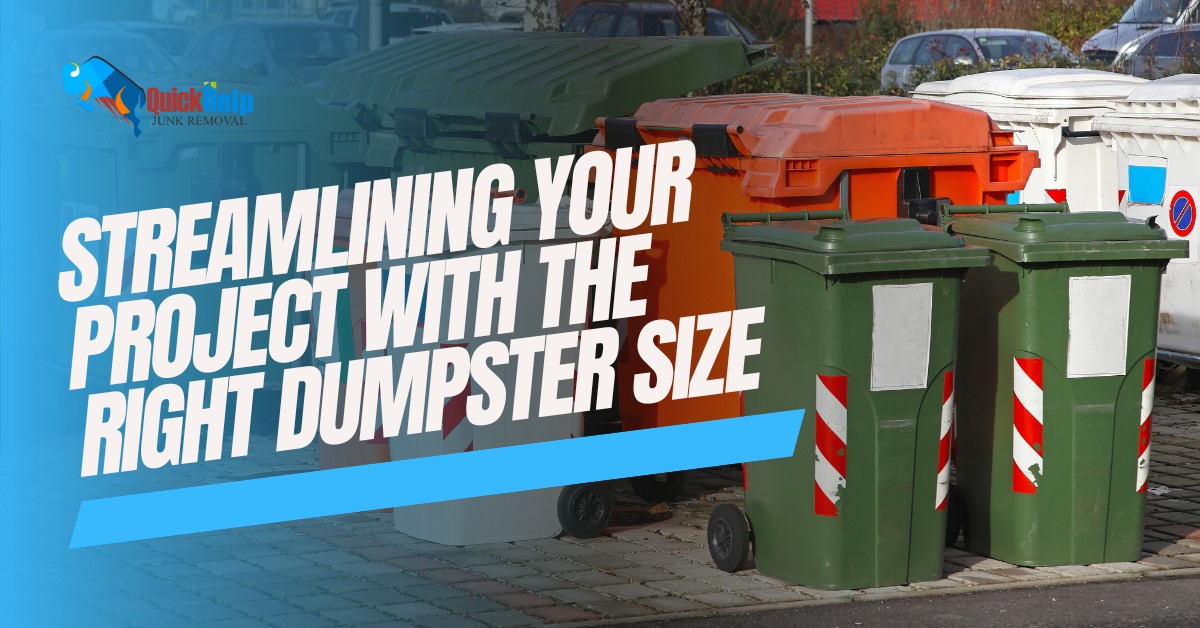Choosing the Right Dumpster Size
When embarking on a renovation, construction, or decluttering project, one of the crucial decisions you’ll have to make is choosing the right dumpster size. It may not seem like the most exciting part of your project, but it’s a decision that can significantly impact the efficiency and cost-effectiveness of your endeavor. In this article, we’ll delve into the importance of selecting the appropriate dumpster size for your project and offer tips to make this process more manageable.
The Consequences of Choosing the Wrong Size
Opting for the wrong dumpster size can lead to a host of issues. If you pick a dumpster that’s too small, you’ll find yourself constantly scheduling pickups and paying for extra trips, which can quickly escalate your costs. On the other hand, if you go too big, you might be overpaying for unused space and potentially wasting your budget on rental fees.
Assess Your Project’s Scope
Before choosing a dumpster size, it’s essential to assess the scope of your project. Are you cleaning out your attic, renovating your kitchen, or working on a large-scale construction project? The size and type of debris generated will vary greatly depending on your project, and this will play a significant role in determining the appropriate dumpster size.
Know the Sizes Available
Dumpster sizes are typically measured in cubic yards. The most common options range from 10 to 40 cubic yards. Smaller dumpsters are suitable for residential cleanouts and minor renovations, while larger ones are ideal for construction sites or major home remodeling projects.
Consider the Type of Debris
The type of debris you’ll be dealing with is another crucial factor in selecting the right dumpster size. Construction debris, such as drywall and concrete, can quickly fill a dumpster, so it’s important to account for this when choosing the size. Conversely, bulkier items like furniture may take up a lot of space but have less overall weight.
Estimate the Amount of Debris
Estimating the volume of debris you’ll produce is challenging, but it’s a critical step. To get a rough idea, visualize the items you’ll be disposing of and consider their dimensions. Additionally, you can consult with your dumpster rental company for guidance.
Don’t Forget Weight Limits
Dumpster sizes are not only about cubic yards; they also come with weight limits. Exceeding these limits can result in overage charges, so make sure to choose a size that accommodates both volume and weight requirements for your project.
Option for a Slightly Larger Size
As a general rule of thumb, it’s often a good idea to choose a dumpster that’s slightly larger than your initial estimate. It’s better to have a bit of extra space than to run out of room and have to order another dumpster.
Check Local Regulations
Lastly, before finalizing your dumpster rental, be sure to check local regulations regarding dumpster placement, permits, and any specific requirements. This can vary by city or municipality, and adhering to these guidelines is essential to avoid potential fines.
Consulting Your Dumpster Rental Company
One of the best resources at your disposal when selecting the right dumpster size is your chosen dumpster rental company. They have the expertise to guide you through the decision-making process, helping you avoid costly mistakes. Be sure to communicate your project details and ask for their recommendations.
Conclusion
Choosing the right dumpster size is a critical decision that should not be overlooked in any project. To ensure the success and cost-effectiveness of your endeavor, assess your project’s scope, consider the type and amount of debris, and be aware of weight limits. It’s always better to go a bit larger than too small, and consulting with your dumpster rental company can provide valuable insights. Taking the time to make an informed decision will ultimately save you time and money in the long run.




